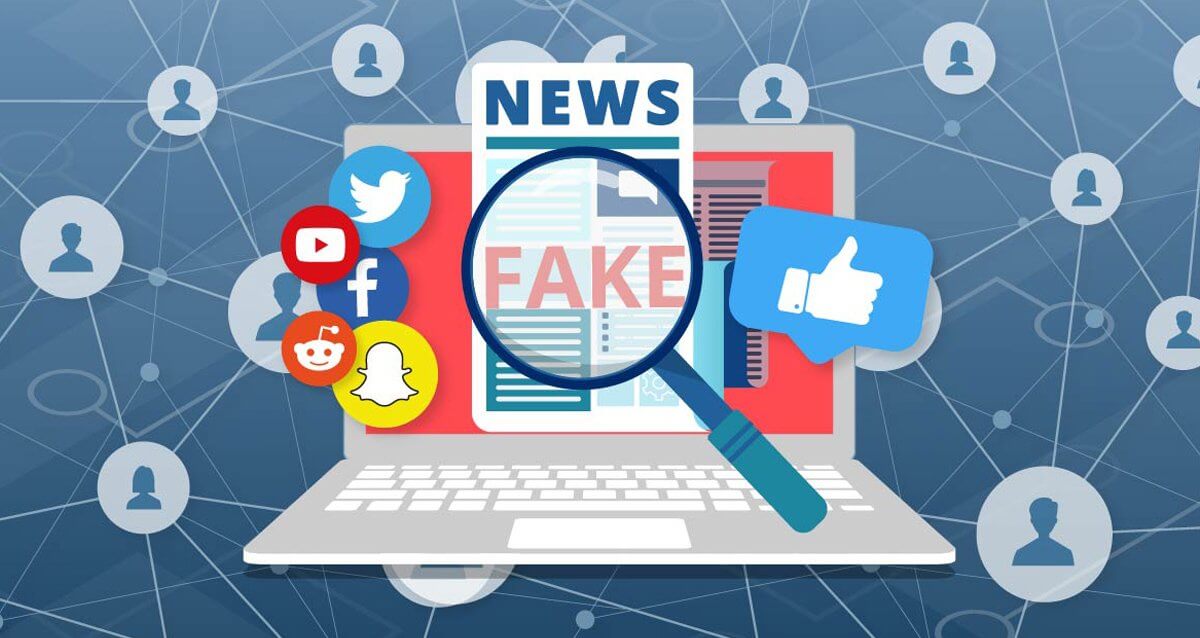
The Disinformation Industrial Complex vs Domestic Terror: A Growing Threat
The disinformation industrial complex vs domestic terror takes center stage as a growing threat to our democracy and national security. This insidious combination of online manipulation and real-world violence is a complex issue that demands our attention. It’s a modern-day battleground where truth and falsehood clash, and the stakes are higher than ever before.
The internet has become a breeding ground for disinformation, with malicious actors using it to spread lies, sow discord, and incite violence. These campaigns are often fueled by political agendas, economic interests, or even extremist ideologies. The consequences of this disinformation can be devastating, leading to polarization, distrust, and even real-world violence.
Domestic terrorism, fueled by extremist ideologies and often amplified by online propaganda, presents a grave danger to our society. This is not just a theoretical threat; it is a real and present danger that we must confront.
Defining the Disinformation Industrial Complex
The Disinformation Industrial Complex is a term used to describe the interconnected network of individuals, organizations, and platforms that intentionally spread false or misleading information for political, economic, or social gain. This complex has evolved significantly in recent years, fueled by the rise of social media and the increasing reliance on online information.
The Evolution of Disinformation as a Tool for Political Manipulation
Disinformation has been used as a tool for political manipulation for centuries, but the advent of the internet and social media has significantly amplified its reach and effectiveness. In the past, disinformation campaigns relied on traditional media outlets like newspapers and television, which had limited reach and were often subject to fact-checking and scrutiny.
However, the internet has created a vast and decentralized information ecosystem, where false information can spread rapidly and easily. Social media platforms, in particular, have become fertile ground for disinformation campaigns. Their algorithms are designed to prioritize engagement, often leading to the spread of sensationalized or emotionally charged content, regardless of its accuracy.
This has created a “filter bubble” where users are increasingly exposed to information that confirms their existing beliefs, making them more susceptible to disinformation.
The disinformation industrial complex thrives on exploiting vulnerabilities, and the lack of excitement among young Black voters about the Biden-Harris ticket, as reported in this article , is a prime example. This disenfranchisement fuels cynicism and apathy, creating fertile ground for domestic terror to flourish.
The fight against disinformation is a crucial battle in the larger war against extremism.
Key Players Involved in Spreading Disinformation
The Disinformation Industrial Complex involves a wide range of actors, including:
- State Actors:Governments have long used disinformation as a tool of foreign policy, seeking to influence public opinion in other countries or undermine their adversaries. Examples include the Russian government’s interference in the 2016 US presidential election and the Chinese government’s efforts to suppress dissent and promote its own narrative.
- Political Parties:Political parties have increasingly employed disinformation tactics to gain an advantage in elections. This can involve spreading false information about opponents, creating fake news stories, or manipulating social media algorithms to target specific demographics.
- Social Media Platforms:Social media platforms themselves play a role in the spread of disinformation. Their algorithms can inadvertently amplify false content, and they have been criticized for not doing enough to combat the spread of misinformation.
- Disinformation Brokers:These are individuals or organizations that specialize in creating and distributing disinformation. They may work for governments, political parties, or private companies, and they often use sophisticated techniques to make their content appear authentic.
Examples of Disinformation Campaigns that Have Impacted Domestic Politics, The disinformation industrial complex vs domestic terror
The Disinformation Industrial Complex has had a significant impact on domestic politics in many countries. Here are a few examples:
- The 2016 US Presidential Election:The Russian government interfered in the 2016 US presidential election by spreading disinformation through social media and hacking into political campaigns. This interference was designed to sow discord and undermine public trust in the democratic process.
- The Brexit Referendum:The 2016 Brexit referendum in the United Kingdom was also targeted by disinformation campaigns. False information about the economic consequences of leaving the European Union was spread through social media, influencing the outcome of the vote.
- The COVID-19 Pandemic:The COVID-19 pandemic saw a surge in disinformation campaigns targeting public health measures, such as vaccination. False information about the virus and its origins was widely spread through social media, leading to confusion and mistrust.
The Nature of Domestic Terrorism: The Disinformation Industrial Complex Vs Domestic Terror
Domestic terrorism is a serious threat to national security and public safety. It is defined as acts of violence or the threat of violence that are committed within a country’s borders by individuals or groups who are motivated by political, religious, or ideological beliefs.
Domestic terrorism can take many forms, and it is important to understand the different types of domestic terrorism and the factors that contribute to it.
Forms of Domestic Terrorism
Domestic terrorism can be categorized into several distinct forms, each with its own unique characteristics and motivations.
It’s a terrifying thought, isn’t it? The idea that our own democracy is being chipped away at by a well-funded disinformation machine that thrives on fear and division. And while the focus is often on the “big picture,” it’s the small, seemingly insignificant actions that can have the most devastating impact.
For example, millions of Americans get bigger Social Security payments as the cost of living adjustment kicks in , but this positive news can easily be twisted and manipulated into a narrative that further divides us. This is how the disinformation industrial complex operates, weaving a web of misinformation that ultimately fuels domestic terror.
- Right-wing extremism: This form of domestic terrorism is characterized by extremist ideologies that often promote white supremacy, anti-government sentiment, and conspiracy theories. Right-wing extremist groups often target minority groups, government officials, and symbols of authority.
- Left-wing extremism: Left-wing extremism, while less common than right-wing extremism, involves ideologies that often promote socialist or anarchist principles and may target capitalist institutions or government agencies.
- Identity-based terrorism: This form of domestic terrorism is driven by extremist ideologies based on ethnicity, religion, or other identity groups. Identity-based terrorist groups may target individuals or groups based on their perceived differences or perceived threats to their identity.
Motivations and Ideologies
Domestic terrorism is often driven by a complex mix of motivations and ideologies. Some common factors include:
- Political grievances: Individuals or groups may resort to violence to express their dissatisfaction with government policies, social inequalities, or perceived injustices.
- Religious extremism: Some individuals or groups may be motivated by extreme religious beliefs that justify violence against those who are perceived as enemies or infidels.
- Racial or ethnic hatred: Domestic terrorism can be fueled by hatred and prejudice against certain racial or ethnic groups.
- Anti-government sentiment: Individuals or groups who distrust or oppose the government may engage in violence to overthrow or disrupt its authority.
- Conspiracy theories: Belief in unfounded conspiracy theories can lead individuals to believe that violence is necessary to protect themselves or their communities from perceived threats.
The Role of Disinformation
Disinformation can play a significant role in radicalizing individuals and fueling domestic terrorism.
- Spread of extremist ideologies: Disinformation campaigns can amplify extremist ideologies and make them more accessible to wider audiences, including those who may be susceptible to radicalization.
- Creation of echo chambers: Social media platforms and online forums can create echo chambers where individuals are exposed only to information that confirms their existing biases, making them more likely to embrace extremist views.
- Deception and manipulation: Disinformation can be used to deceive individuals into believing false narratives that justify violence.
- Incitement to violence: Disinformation can be used to incite violence by spreading false information about threats or by demonizing specific groups.
The Intersection of Disinformation and Domestic Terrorism
The relationship between disinformation and domestic terrorism is a complex and concerning one. Disinformation, the deliberate spread of false or misleading information, can be a powerful tool for inciting violence and fueling extremist ideologies. It can manipulate individuals’ perceptions of reality, create distrust in legitimate institutions, and foster a sense of grievance and anger that can lead to violent acts.
The Role of Disinformation in Inciting Violence
Disinformation can be used to incite violence in several ways. For instance, it can be used to:
- Create a narrative of victimhood:Disinformation can portray certain groups as victims of oppression or persecution, fueling resentment and a desire for revenge.
- Spread conspiracy theories:Conspiracy theories can create a sense of paranoia and fear, leading individuals to believe that they are under attack and need to take violent action to protect themselves.
- Dehumanize opponents:Disinformation can portray opponents as subhuman or dangerous, making it easier for individuals to justify violence against them.
- Promote violence as a solution:Disinformation can present violence as a legitimate or even necessary response to perceived threats or injustices.
The Role of Social Media Platforms in Spreading Disinformation and Fostering Online Radicalization
Social media platforms have become a key vector for the spread of disinformation and the fostering of online radicalization.
- Algorithm-driven content:Social media algorithms often prioritize content that is engaging, even if it is false or misleading. This can create echo chambers where individuals are only exposed to information that confirms their existing beliefs.
- Spread of misinformation:Social media platforms can be used to spread misinformation rapidly and widely, reaching large audiences with little effort.
- Online communities:Social media platforms can provide a space for individuals with extremist views to connect with each other, share information, and radicalize each other.
- Targeted advertising:Disinformation actors can use targeted advertising to reach individuals who are susceptible to their messages.
Tactics Used by Disinformation Actors and Domestic Terrorists
Disinformation actors and domestic terrorists often employ similar tactics to achieve their goals.
It’s scary how the disinformation industrial complex fuels domestic terror, twisting narratives to fit their agenda. But sometimes, the most dangerous threats are hidden in plain sight, like the growing crisis of childhood obesity – a problem that often gets sidelined by louder, more sensationalized issues.
We need to be vigilant against both overt and insidious threats, demanding transparency and truth from those in power.
- Propaganda:Both groups use propaganda to spread their messages and influence public opinion. This can include the use of emotional appeals, distorted information, and selective framing of events.
- Intimidation:Both groups may use intimidation tactics to silence dissent and discourage opposition. This can include threats, harassment, and violence.
- Misinformation and disinformation:Both groups rely on misinformation and disinformation to create confusion, sow distrust, and undermine legitimate institutions.
- Exploitation of grievances:Both groups exploit existing grievances and social divisions to recruit members and mobilize support.
The Impact of Disinformation on Domestic Security
Disinformation poses a significant threat to domestic security by undermining trust in institutions, influencing public opinion, and fueling social unrest. It can erode the fabric of a democratic society, creating fertile ground for extremism and violence.
The Threat to National Security
Disinformation can be used to manipulate public opinion, sow discord, and undermine national security. For example, foreign adversaries may spread disinformation to weaken public support for government policies, incite unrest, or disrupt critical infrastructure.
- Foreign Interference in Elections:Disinformation campaigns can be used to influence election outcomes by spreading false information about candidates, policies, or the electoral process itself. This can undermine public trust in elections and democratic institutions.
- Propaganda and Incitement to Violence:Disinformation can be used to spread propaganda that justifies violence or hatred against specific groups, potentially leading to real-world violence and unrest.
- Cyberattacks and Information Warfare:Disinformation can be used to create chaos and disruption by spreading false information about cyberattacks, natural disasters, or other events, potentially causing panic and undermining public confidence in government responses.
The Erosion of Public Trust
Disinformation can erode public trust in government and institutions by creating a climate of suspicion and distrust. This can make it difficult for governments to effectively communicate with citizens, implement policies, and respond to crises.
- Conspiracy Theories:Disinformation often takes the form of conspiracy theories that spread distrust in government, science, and other institutions. These theories can undermine public confidence in official information and make people more susceptible to manipulation.
- Misinformation and Misleading Information:The spread of misinformation and misleading information can erode public trust in the media and other sources of information. This can make it difficult for people to distinguish between credible and unreliable information.
- Polarization and Division:Disinformation can contribute to political polarization and social division by spreading information that reinforces existing biases and prejudices. This can make it difficult for people to engage in constructive dialogue and find common ground.
The Influence on Public Opinion and Political Discourse
Disinformation can influence public opinion and political discourse by shaping perceptions of reality and influencing people’s beliefs and behaviors.
- Echo Chambers and Filter Bubbles:Disinformation can spread rapidly through social media and online platforms, creating echo chambers and filter bubbles where people are only exposed to information that confirms their existing beliefs. This can lead to a distorted view of reality and make people more susceptible to manipulation.
- Emotional Manipulation:Disinformation often uses emotional appeals, such as fear, anger, or outrage, to manipulate people’s emotions and influence their behavior. This can make people more likely to share or believe false information without critically evaluating its source or accuracy.
- Political Polarization:Disinformation can contribute to political polarization by spreading information that reinforces existing biases and prejudices. This can make it difficult for people to engage in constructive dialogue and find common ground.
Countering the Disinformation Industrial Complex and Domestic Terrorism
The interconnected threats of disinformation and domestic terrorism demand a comprehensive and multifaceted approach to effectively counter them. This requires a collaborative effort involving governments, technology companies, civil society organizations, and individuals. Strategies must address the root causes of these threats, empower individuals to discern truth from falsehood, and bolster security measures to prevent and respond to acts of violence.
Combating Disinformation
Countering the spread of disinformation is crucial to mitigating its influence on individuals and society. Effective strategies include:
- Fact-checking initiatives:Independent fact-checking organizations play a vital role in verifying information and exposing false or misleading content. They utilize a range of methods, including cross-referencing sources, analyzing data, and consulting experts, to assess the accuracy of claims. Their findings are disseminated through websites, social media platforms, and traditional media outlets, providing the public with reliable information.
- Media literacy education:Equipping individuals with the skills to critically evaluate information is essential for combating disinformation. Media literacy education programs teach individuals how to identify sources, assess credibility, and recognize common disinformation tactics. These programs are often implemented in schools, libraries, and community centers, promoting critical thinking and responsible information consumption.
- Platform regulation:Social media platforms have a significant role to play in curbing the spread of disinformation. They can implement policies to remove harmful content, limit the reach of false information, and promote transparency in their algorithms. This includes labeling misleading content, demoting accounts that repeatedly spread disinformation, and requiring users to verify their identity.
The Role of Law Enforcement and Intelligence Agencies
Law enforcement and intelligence agencies play a critical role in preventing and responding to domestic terrorism. Their efforts focus on:
- Intelligence gathering and analysis:Agencies monitor online and offline activity to identify potential threats, assess the motives and capabilities of individuals or groups, and anticipate future attacks. They analyze data from various sources, including social media, open-source intelligence, and confidential informants, to develop a comprehensive understanding of the threat landscape.
- Investigation and prosecution:Law enforcement agencies investigate suspected acts of terrorism, gather evidence, and prosecute individuals involved in planning or carrying out attacks. They work closely with intelligence agencies to share information and coordinate efforts. The goal is to disrupt terrorist networks, dismantle their infrastructure, and bring perpetrators to justice.
- Community engagement:Building trust and fostering collaboration with communities is essential for preventing and responding to domestic terrorism. Law enforcement agencies can engage with local leaders, community organizations, and residents to address concerns, share information, and encourage reporting of suspicious activity. This approach promotes early detection and intervention, reducing the likelihood of attacks.
A Comprehensive Approach
Addressing the interconnected threats of disinformation and domestic terrorism requires a comprehensive approach that encompasses:
- Multi-agency collaboration:Effective counterterrorism efforts require collaboration between law enforcement, intelligence agencies, government departments, technology companies, and civil society organizations. This includes sharing information, coordinating strategies, and leveraging expertise across different sectors.
- Public awareness campaigns:Raising public awareness about the dangers of disinformation and domestic terrorism is crucial for empowering individuals to protect themselves and their communities. Campaigns should focus on educating the public about common disinformation tactics, promoting critical thinking skills, and encouraging reporting of suspicious activity.
- Investing in research and development:Continued investment in research and development is necessary to stay ahead of evolving threats. This includes studying the psychology of extremism, developing new technologies to combat disinformation, and exploring innovative approaches to counterterrorism.
Closing Summary

The disinformation industrial complex vs domestic terror is a complex and evolving threat. It requires a multi-faceted approach to counter it, including media literacy education, platform regulation, and robust law enforcement efforts. We must also work to build resilience in our communities and promote critical thinking skills to combat the spread of misinformation.
The future of our democracy depends on our ability to effectively address these intertwined challenges.






